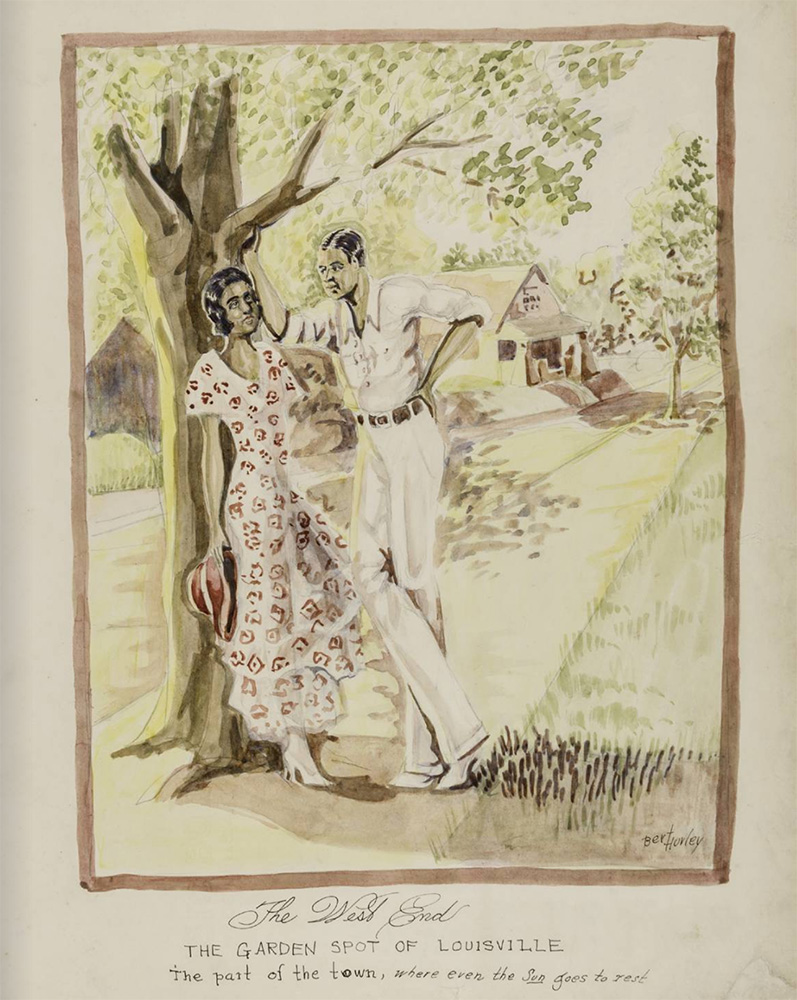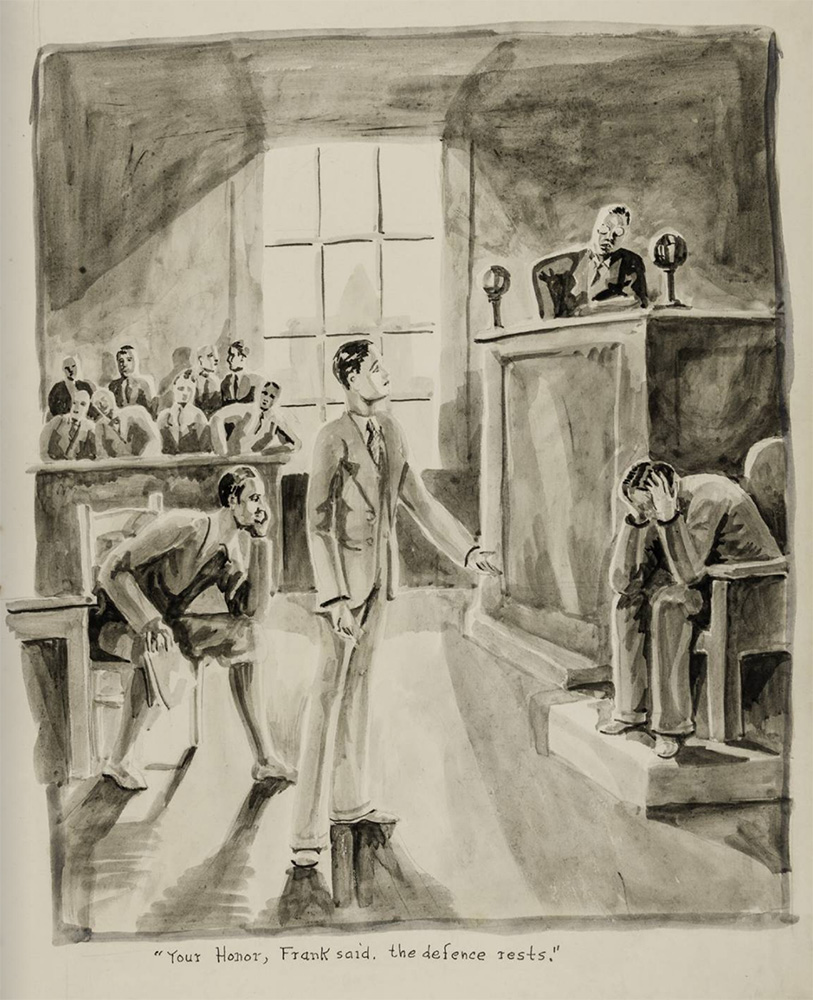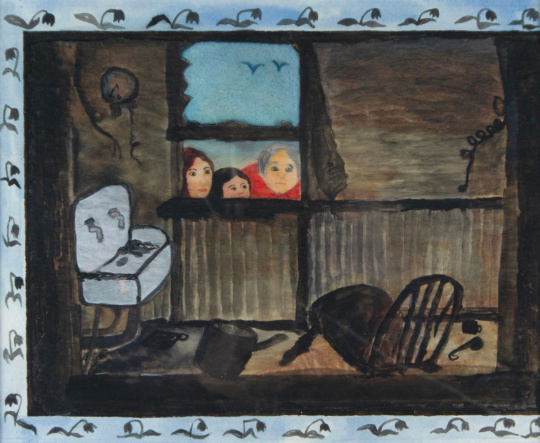
Images courtesy Speed Art Museum, Louisville.
In the early twentieth century, Walnut Street—now Muhammad Ali Boulevard—in Louisville, Kentucky was a thriving thoroughfare of Black-owned businesses that catered to the surrounding population of the West End neighborhood. In the following decades, nearly all of Walnut Street’s shops, theaters, and banks would be razed, along with the homes that surrounded them, by the federally funded “urban renewal” programs that swept the nation in the 50s and 60s. The promises of building affordable housing meant to legitimize these destructive policies, which almost always targeted historically Black neighborhoods, never came to bear, and the area has continued to suffer from disinvestment and racist public policy since.
Walnut Street and the West End of Louisville—still at the height of their activity in 1932—serve as the backdrop to Loose Nuts: A Rapsody [sic] in Brown, an illustrated novella by the Louisville-born artist Bert Hurley (1898-1955). Spreads from the book, separated from their stapled binding and put behind glass, are now on view at the Speed Art Museum in the artist’s home city. The story is at once a sort of investigative noir thriller, a period piece, and courtroom melodrama that follows a loosely fictionalized Hurley in the role of journalist as he investigates a mysterious motorcycle accident and its effects on Louisville’s Black upper class. In his real life, the artist held numerous jobs for the L&N Railroad, including one as a correspondent for their company periodical.

Images courtesy Speed Art Museum, Louisville.
Alternately rendered in pen, crayon, watercolor, and (most effectively) in ink wash, Hurley’s illustrations show a community dressed in spectacular suits and flowing pastel gowns, living leisurely in manicured and sumptuous gardens. Much of what happens in the story is spectacularly, delightfully asinine, almost overwhelmingly pleasant and inconsequential. In light of the eventual destruction of the landscape and community which Hurley so delicately rendered, and the enduring consequences of that destruction still felt today, Loose Nuts feels elegiac for a wondrous time gone by. Perhaps Hurley paints for us, too, in his illustrations and words, a blueprint for a better world to come. In his forward to the text, Hurley writes of his hope that Loose Nuts will “prove to be a source of amusement; a medium of deversion [sic]; and an object of interest.” It is certainly all three of these things, and more.
Loose Nuts: Bert Hurley’s West End Story opened at the Speed Art Museum in Louisville on December 13, 2019. Hurley’s entire novella is available to view on the museum’s website.
This review is supported by the Creative Capital | Andy Warhol Foundation Arts Writers Grant Program.




